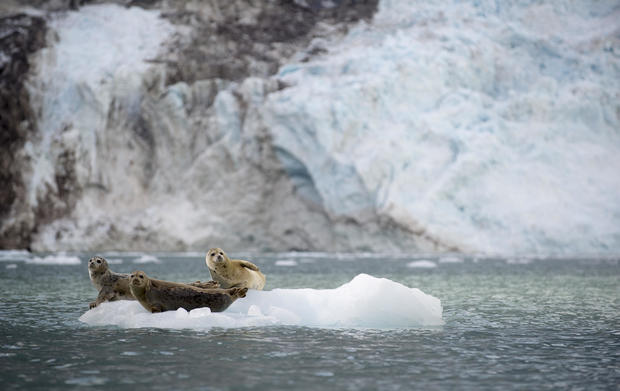A deadly virus is rapidly spreading among marine mammals in the Arctic. In a new study published Wednesday in the journal Nature, scientists have found a link between the disease and melting sea ice due to climate change.
Phocine distemper virus (PDV) has been a known pathogen in certain seal populations for decades, resulting in several mass mortality events involving tens of thousands of animals since 1988. Similarities in the outbreaks lead scientists to question how the virus was circulating in seal species all over the globe.
When the virus started to spread across species of otters, seals and sea lions in the northern Pacific Oceans, scientists thought melting ice could be the culprit.
Researchers studied 15 years of data that tracked 2,500 marine mammals in a variety of locations via satellite to find if upticks in PDV matched with declines in sea ice. They also studied measurements of Arctic sea ice over the same time period and examined blood and nasal swab samples from 165 dead ice-associated animals.
In one case, scientists found a record amount of sea ice melt in August 2002 was followed by a widespread outbreak of PDV in North Pacific Steller sea lions in 2003 and 2004. During those years, over 30% of the animals tested positive for the virus.
“The loss of sea ice is leading marine wildlife to seek and forage in new habitats and removing that physical barrier, allowing for new pathways for them to move,” author Dr. Tracey Goldstein told BBC News. “As animals move and come in contact with other species, they carry opportunities to introduce and transmit new infectious disease, with potentially devastating impacts.”
Melting sea ice has been one of the clearest indicators of over the last few decades.
According to a recent report by the Intergovernmental Panel on Climate Change, the planet has reached a tipping point where some of the more severe consequences of climate change can no longer be avoided. Ice in Greenland, Antarctica and other mountain glaciers around the world is continuing to melt at accelerating rates as a result of heat-trapping pollution from human activities.
The resulting sea level rise around the world already threatens coastal populations, fish supplies and endangered species.
“These sea ice changes in September are likely unprecedented for at least 1,000 years,” the IPCC said in the report. “Arctic sea ice has thinned, concurrent with a transition to younger ice. Between 1979 and 2018, the real proportion of multi-year ice at least five years old has declined by approximately 90%.”
Researchers concluded that melting Arctic sea ice caused by human-driven climate change paved the way for PDV to spread to new regions and infect new populations of marine mammals, especially along the northern Russian coast and along the coast of northern Canada.
Scientists believe the spread of pathogens could become more common as ice continues to melt, with the increased opportunity to affect more species.


